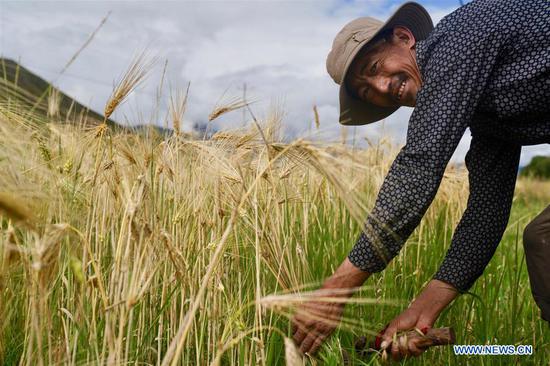China's precise poverty reduction strategy is inspiring as the world's "multidimensional poverty" hits children worst, a senior expert said here Thursday.
Sabina Alkire, director of Oxford Poverty and Human Development Initiative (OPHI), said that China's government-led fight against poverty is a good example to the developing world as China's anti-poverty struggle is on a village-to-village, country-to-county, and district-to-district basis, making the country's poverty reduction more efficient.
Official statistics from China shows that from 1995 to 2005, 268 million people were lifted out of poverty in China, while figures from the World Bank from 1990 to 2000 are roughly the same magnitude, she said, who was here to introduce the latest index by the UN Development Program (UNDP) and OPHI.
According to the 2018 Multidimensional Poverty Index (MPI), while only 1.4 percent of the Chinese people live under the income poverty line of 1.9 dollars (purchasing power parity), some 4 percent are dimensionally poor.
The MPI, introduced in 2010 by the UNDP, looks beyond income to understand how people experience poverty in multiple and simultaneous ways.
It identifies how people are being left behind across three key dimensions: health, education and living standards. Those deprived in at least of a third of the MPI's components are defined as multidimensionally poor.
Meanwhile, the index shows that a significant number of people living in poverty are younger than 18 years old, according to estimates by the 2018 global Multidimensional Poverty Index (MPI).
The new figures, by UNDP and OPHI, show that of some 1.3 billion people living in multidimensional poverty in 104 primarily low and middle-income countries, 662 million are children.
The 2018 figures cover almost three-quarters of the world's population.
Of the 1.3 billion multidimensionally poor people, almost half -- 46 percent - are thought to be living in severe poverty and are deprived in at least half of the dimensions covered in the MPI.
On an optimistic note, Achim Steiner, UNDP administrator, said also at the index release that "Although the level of poverty -- particularly in children -- is staggering, so is the progress that can be made in tackling it."
In India, the first country for which progress over time has been estimated, 271 million people moved out of poverty between 2005/06 and 2015/16; its poverty rate was nearly halved, falling from 55 percent to 28 percent over the ten-year period, said Alkire.
Although similar comparisons over time have not yet been calculated for other countries, the latest information from UNDP's Human Development Index C released last week shows significant development progress in all regions, including many Sub-Saharan African countries.
Multidimensional poverty is found in all developing regions of the world, but it is particularly acute -- and significant -- in Sub-Saharan Africa and South Asia.
In Sub-Saharan Africa for instance, some 560 million people (58 percent of the population) are living in multidimensional poverty, 342 million (61 percent of those living in multidimensional poverty) of them severely so.
In South Asia, 546 million people (31 percent of the population) are multidimensionally poor, 200 million of them (37 percent) severely so.
The data show that in addition to the 1.3 billion people classed as poor, an additional 879 million are at risk of falling into multidimensional poverty, which could happen quickly if they suffer setbacks from conflict, sickness, drought, unemployment and more.
The 2018 edition of the MPI covers 104 countries comprising 5.5 billion people, or about 74 of the global population.


















































